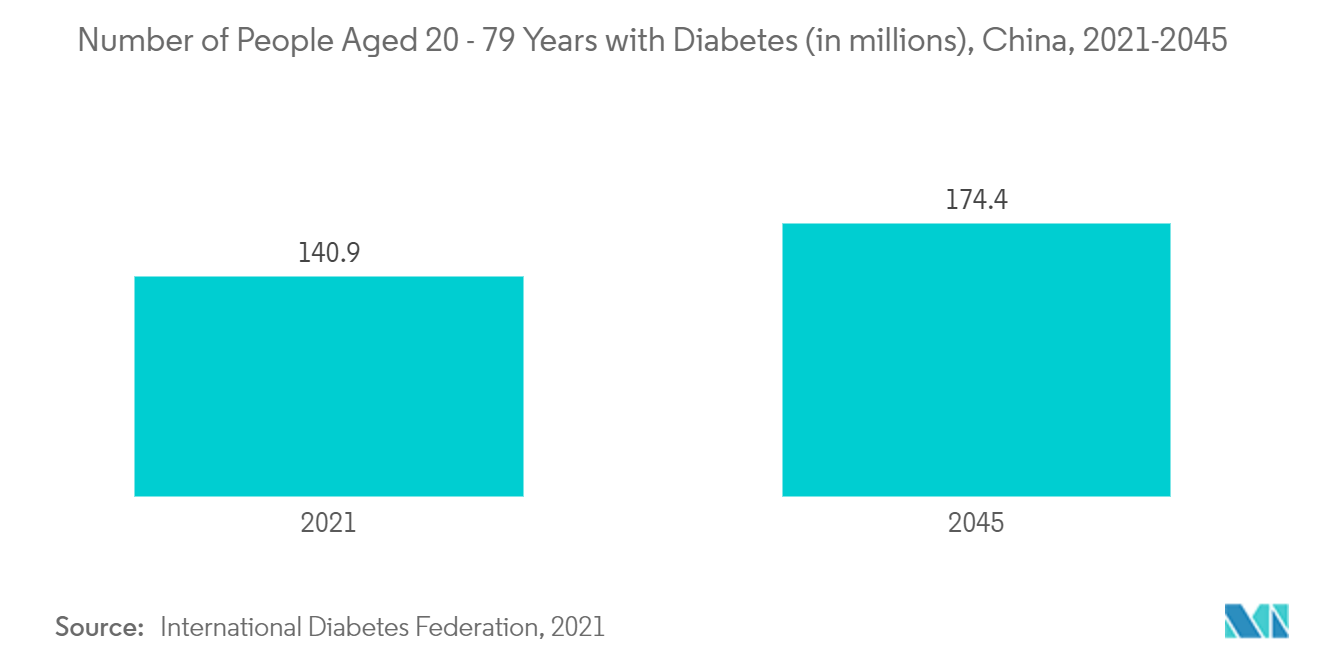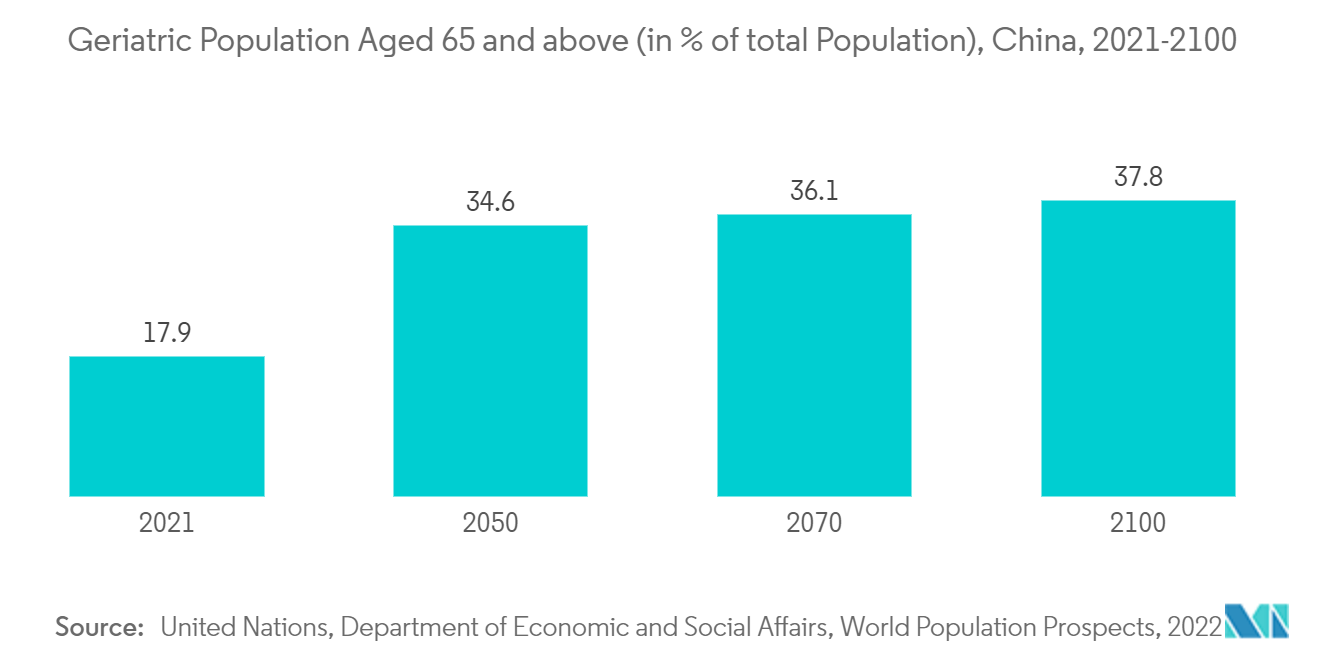Market Trends of China Ophthalmic Devices Industry
This section covers the major market trends shaping the China Ophthalmic Devices Market according to our research experts:
Glaucoma Devices Segment is Expected to Show Better Growth over the Forecast Period
Glaucoma devices include glaucoma drainage devices, implants, stents, lenses, and others. The segment is driven by the rising prevalence of glaucoma and product launches by the key market players.
According to the study published in the BMC Ophthalmology Journal in February 2022, China is the world's most populous country and has the highest rate of glaucoma. In addition, the same source reported that China had 15.58 million people with all types of glaucoma in 2020, which is predicted to reach 25.16 million by 2050. The high prevalence of glaucoma is expected to propel the growth of glaucoma devices for the management of the disease during the forecast period.
Additionally, the launch of new products in the market contributes to the growth of the market segment. For instance, in July 2021, Advanced Ophthalmic Innovations launched its next-generation glaucoma implant, the Paul Glaucoma Implant (PGI). It was implanted for the first time in China at the Boao Super Hospital in Hainan. The launch of innovative products in the country and their utility in hospitals are accelerating segment growth.
Furthermore, long-term elevated blood sugar levels damage the blood vessels in the eye and lead to conditions such as cataracts, diabetic macular edema, and others. For instance, as per the IDF 2021 report, China is ranked one of the top 10 countries in the world with the highest number of diabetes cases. Diabetes-related health expenditure in China was estimated to be USD 165.3 billion in 2021. Thus, the high prevalence of diabetes in the country is associated with a high probability of glaucoma cases in the country, which is expected to contribute to segment growth during the forecast period.

Technological Advancements in Ophthalmic Devices is Expected to Propel the Market Growth Over the Forecast Period.
The devices and techniques have the potential to improve outcomes for individuals suffering from incurable conditions. The technology employed by ophthalmologists across all subspecialties has made significant advancements so far. Technological advancements in diagnostic and ophthalmic devices are vital for treatment and it also creates competition among market players to retain their market position.
The research and developments conducted in various medical institutions to develop an innovative treatment or diagnostic device in the country are estimated to create opportunities for market growth. The research projects are sponsored and done in collaboration with other medical organizations and market players. For instance, in September 2022, a research article published in the National Biomedical Engineering stated that a new technology Retinal nerve fiber layer Optical Texture Analysis (ROTA) developed by HKUMed and CU Medicine can visualize axonal fibre bundles on the retina to advance the early diagnosis of glaucoma and optic neuropathies. The research was led by the Department of Ophthalmology, School of Clinical Medicine, LKS Faculty of Medicine of The University of Hong Kong (HKUMed) in with collaboration from the Faculty of Medicine of The Chinese University of Hong Kong (CU Medicine) and local and international partners. ROTA outperforms the current clinical standards, attaining 15.0% to 28.4% higher sensitivity in detecting early optic nerve damage in glaucoma which is the leading cause of irreversible blindness. Such advancements in the glaucoma treatment is estimated to augment the market growth in the country during the forecast period.
Furthermore, various key players are adopting strategic initiatives such as product launches, approvals, research, and development to develop an innovative and more effective ophthalmic device is also fueling the market growth. For instance, in April 2021, EyeYon Medical's EndoArt was granted the Innovative Device Status by China's Center for Medical Device Evaluation, the arm of the National Medical Products Administration (NMPA). It is the only ophthalmic device in the world to receive both China's Innovative Device Status and the Breakthrough Device Designation from the United States Food and Drug Administration. The EndoArt is one of the world's first synthetic implants that enable doctors to treat chronic corneal edema. The tendency to provide more effective treatment of life-threatening diseases such as chronic edema and technological advancement in devices lead to early approval and granted breakthrough designation, thereby expected to propel the market growth.


